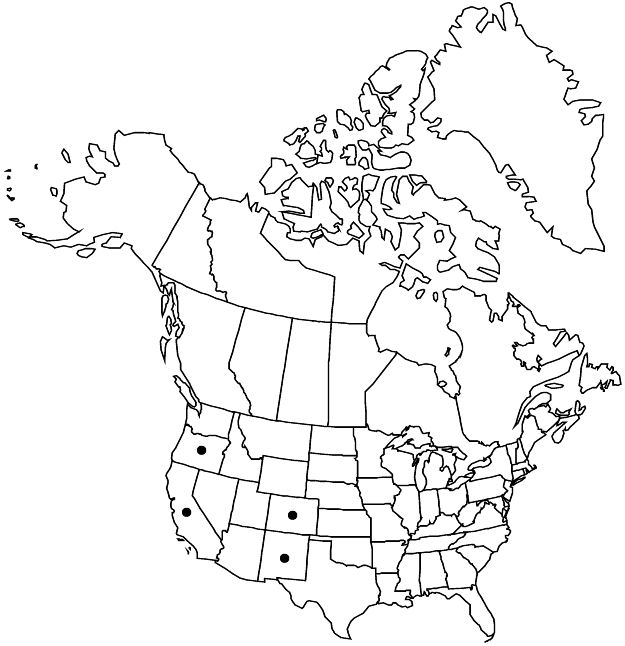Difference between revisions of "Euphorbia crenulata"
Rep. U.S. Mex. Bound. 2(1): 192. 1859.
FNA>Volume Importer |
FNA>Volume Importer |
||
| Line 55: | Line 55: | ||
|publication year=1859 | |publication year=1859 | ||
|special status=Endemic | |special status=Endemic | ||
| − | |source xml=https://jpend@bitbucket.org/aafc-mbb/fna-data-curation.git/src/ | + | |source xml=https://jpend@bitbucket.org/aafc-mbb/fna-data-curation.git/src/f50eec43f223ca0e34566be0b046453a0960e173/coarse_grained_fna_xml/V12/V12_80.xml |
|genus=Euphorbia | |genus=Euphorbia | ||
|subgenus=Euphorbia subg. Esula | |subgenus=Euphorbia subg. Esula | ||
Revision as of 19:56, 16 December 2019
Herbs, usually biennial, occasionally annual, with taproot. Stems erect, sometimes decumbent at base, unbranched or branched, 12–40 cm, glabrous. Leaves: petiole 0–2 mm; blade obovate-spatulate to oblanceolate, 8–22 × 3–10 mm, base broadly attenuate, margins entire or slightly crisped, apex obtuse to ± rounded, minutely apiculate, surfaces glabrous; venation pinnate, midvein prominent. Cyathial arrangement: terminal pleiochasial branches 3, each 2-branched; pleiochasial bracts obovate to orbiculate-reniform, wider than distal leaves; dichasial bracts usually connate 1/3–1/2 length (often only on one side), rarely only connate basally, triangular ovate to reniform, base truncate to perfoliate, margins erose-denticulate to subentire, apex rounded to obtuse, rarely apiculate; axillary cymose branches 0–5. Cyathia: peduncle 0–0.5 mm. Involucre campanulate, 1.8–2.1 × 1.6–1.8 mm, glabrous; glands 4, crescent-shaped, 0.6–1.2 × 1.5–2.3 mm; horns slightly divergent to slightly convergent, 0.4–0.6 mm. Staminate flowers 11–18. Pistillate flowers: ovary glabrous; styles 0.9–1.4 mm, 2-fid. Capsules subovoid, 2.5–3 × 3.5–4 mm, 3-lobed; cocci rounded, smooth or puncticulate, glabrous; columella 1.9–2.3 mm. Seeds cream and brown mottled, oblong-ovoid to nearly globose, 2–2.5 × 1.4–1.7 mm, usually irregularly vermiculate-ridged and large-pitted, occasionally tuberculate or nearly smooth; caruncle reniform, conic, 0.5–0.6 × 0.5–0.7 mm.
Phenology: Flowering and fruiting spring–summer.
Habitat: Conifer, oak, and mixed forests, coastal scrub, grasslands, barrens and outcrops, roadsides.
Elevation: 30–1800 m.
Distribution

Calif., Colo., N.Mex., Oreg.
Discussion
Euphorbia crenulata is most common in the central valleys of California and southern Oregon; it occurs disjunctly in southwestern Colorado and northwestern New Mexico. Previous reports from Arizona are based on misidentified specimens. Euphorbia crenulata is closely related to E. commutata.
Selected References
None.